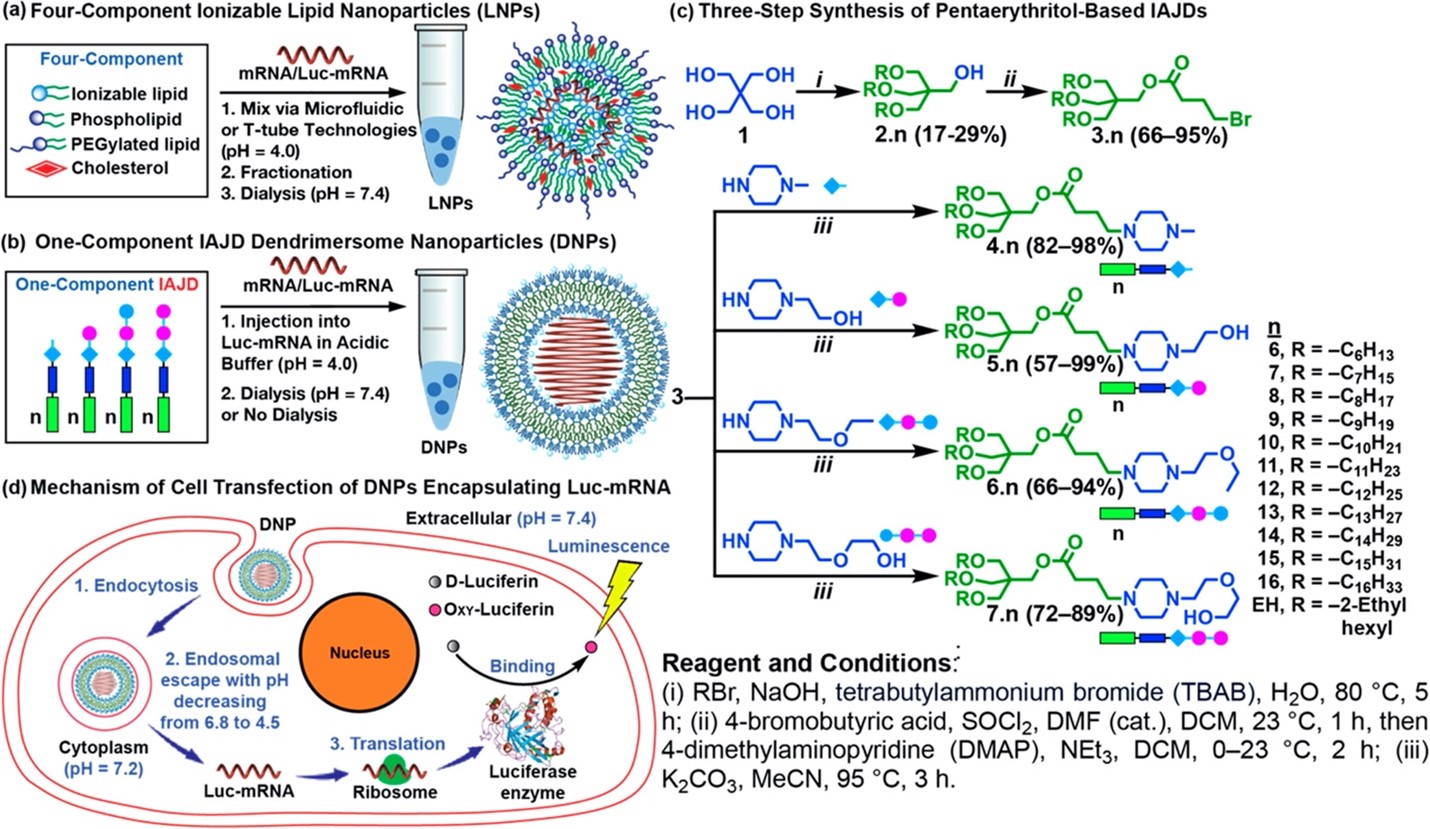A library of easily synthesized ionizable amphiphilic Janus dendrimer (IAJD) compounds that deliver mRNA either to targeted organs or multiple organs, depending on the IAJD design.
Problem:
Four-component lipid nanoparticles (LNPs) are the benchmark synthetic vector for the delivery of mRNA. Despite their high biosafety, low toxicity, and immunogenicity, their drawbacks involve the need for microfluidic or T-tube technology for assembly and low temperature for long-term storage (−70 °C). Additionally, four component LNPs have shown a low transfection efficiency (1-2%).
Solution:
To eliminate the weaknesses of LNPs, the inventors developed a library of one-component compounds designed with precise placement of the IAJD’s functional groups. The mRNA encapsulation step is fast and simple, allowing rapid screening of the properties of each new IAJD and uncovering molecular design principles for targeted delivery.
Technology:
The one-component IAJDs in this library can be synthesized in just three steps. Each is made using symmetrically trialkylated pentaerythritol (PE) in the hydrophobic domain and four different piperazine-based ionizable amines in the hydrophilic part. These IAJDs coalesce with mRNA to form vesicles of predictable sizes, namely dendrimersome nanoparticles (DNPs). This process is achieved through a straightforward injection into an acetate buffer. After conducting in vivo screening, highly effective IAJDs were identified, specifically targeting the spleen, liver, and lymph nodes. One primarily targets the spleen and liver, while six exhibit equal distribution to the spleen, liver, lung, and lymph nodes.
Advantages:
- The first system to demonstrate delivery of mRNA to multiple organs (lung, liver, spleen, and lymph nodes).
- One-component IAJDs can be fabricated in as few as three steps.
- Design changes in the IAJD, such as a decrease in alkyl length, have been shown to increase mRNA transfection.
- IAJDs exhibit higher stability than 4-component LNPs due to symmetric achiral architecture.

Concepts of four-component LNPs (a), one-component IAJD-based DNPs (b), three-step synthesis of PE-based IAJDs (c), and the mechanism of cell transfection of DNPs encapsulating Luc-mRNA (d). This is figure 1 from their recent publication in JACS.
Case ID:
23-10453-TpNCS
Web Published:
7/22/2024
Patent Information:
| App Type |
Country |
Serial No. |
Patent No. |
File Date |
Issued Date |
Expire Date |